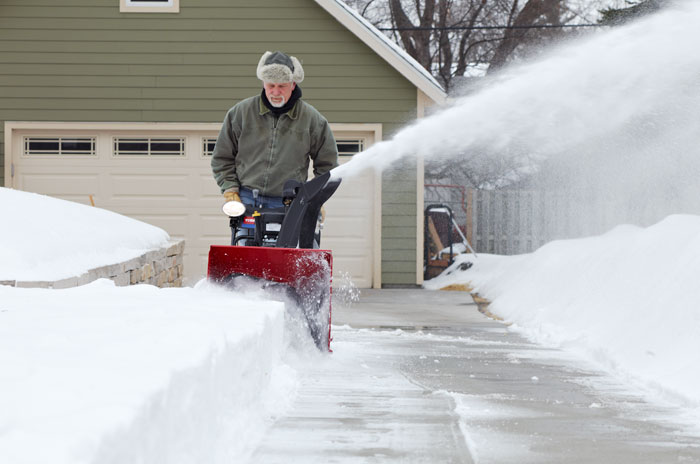5 Tips for Efficient Snow Removal After Large Storms
In most cases, the degree of difficulty in removing snow is directly related to the size of the storm that dumped it. If you are getting ready to take your snowblower out to remove a heavy accumulation, there are 5 steps that can increase your efficiency and shorten the time it takes to finish the job.
- Fuel up first – Starting the job with a full tank can prevent the time-consuming process of letting the machine cool down, walking back for fuel, re-fueling, and then taking the empty tank back to the garage or storage area before re-starting the job.
- Determine where you’ll be throwing your snow – The purpose of this step is create a clearing pattern that minimizes the necessity of making repeat passes for snow that is thrown but doesn’t clear the area. For example, if the snow will be thrown to only one place, you’ll want start the job on the far side of the area so that you can clear snow that has been thrown short as your passes get closer to the outer perimeter.
- Start the job at the center of the area if you’ll be throwing snow in multiple directions – The removal of snow from middle of the area will shorten the distance to all areas where snow is being thrown, but in larger areas some of the thrown snow still may not clear the perimeter. By clearing snow around the perimeter with your last passes you can clear both the snow resulting from the storm as well as the snow that was thrown short at the beginning of the job in a single pass.
- Make adjustments for the wind – High winds can shorten or lengthen throwing distances, so adjust your starting point to take advantage of longer throws as well as to compensate for shorter ones.
- Take smaller cuts and more passes in deep snow – Muscling a snowblower through deep snow can take a toll on both the machine and the operator. Instead, by narrowing your cuts and taking more passes your machine will pick up and throw snow more efficiently while reducing the level of physical exertion. While this strategy sounds like it will be more time consuming, it can actually result in a faster finish with a steady pace and a drastic reduction of clogs in the machinery.
For the best results in heavy snow accumulations, take some time to plan the course of the snow removal job before getting started. Once the job is underway, a methodical approach with narrower than usual cuts and more passes can result in efficiencies that result in a faster finish while also preventing the burnout of the snowblower as well as the operator.

